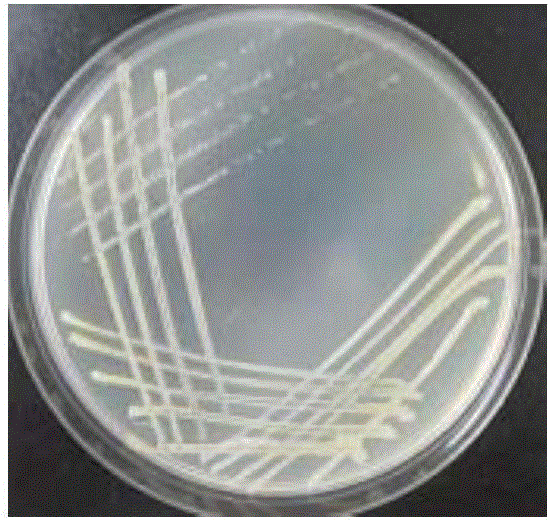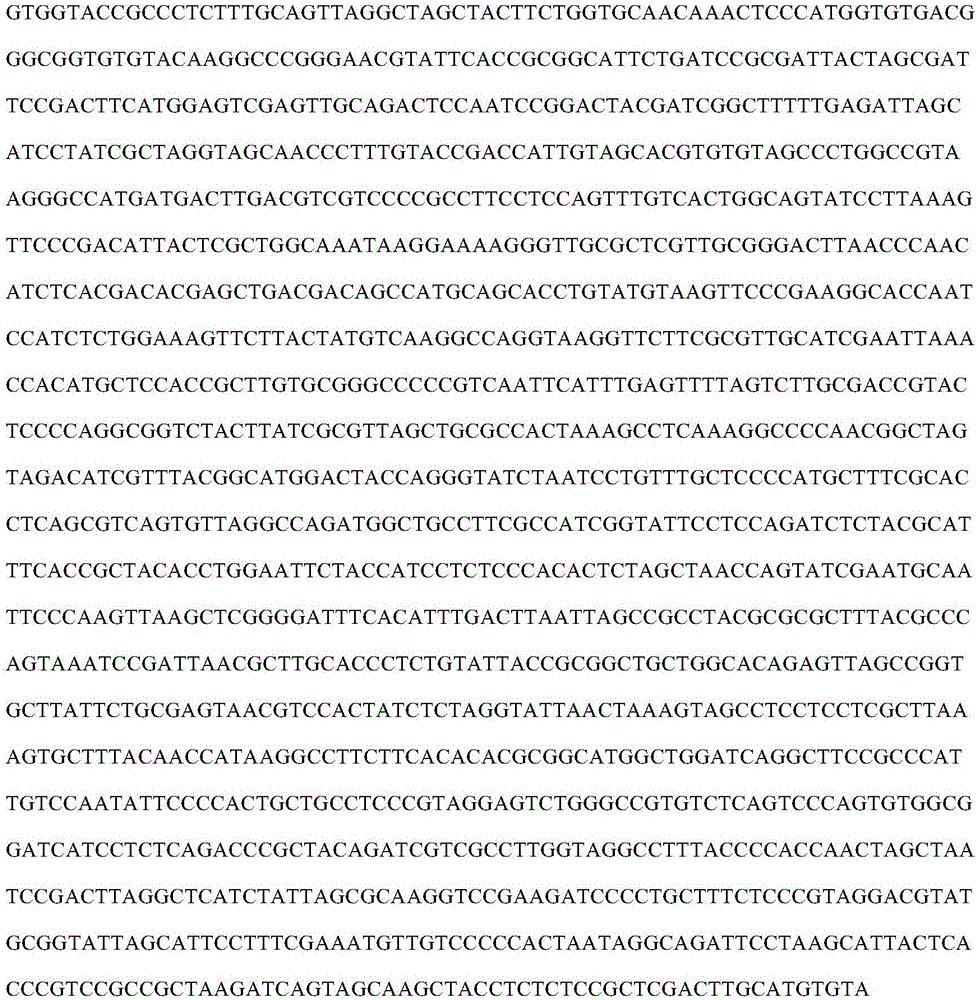Antimony-resistant bacterium NXH1 and application thereof
A technology of bacteria and bacilli, applied in the field of environmental biology, can solve problems such as affecting the growth of crops, polluting the farmland in mining areas, and reducing the quality of crops, etc., and achieve the effects of alleviating the poisoning of plants to heavy metals, promoting the growth of vegetation, and having broad application potential.
- Summary
- Abstract
- Description
- Claims
- Application Information
AI Technical Summary
Problems solved by technology
Method used
Image
Examples
Embodiment 1
[0015] Example 1 Isolation and screening of antimony-resistant bacteria and anti-Sb ability
[0016] Collect plant rhizosphere soil samples near the smeltery in Xikuangshan Antimony Mining Area, Lengshuijiang City, Hunan Province, weigh 100g of the above-mentioned fresh soil samples, add an appropriate amount of antimony potassium tartrate ([C 8 h 4 K 2 o 12 Sb 2 3(H 2 O)]), so that the final concentration of antimony in the soil sample was 1000mg / kg, and placed in a constant temperature incubator at 28°C for enrichment and cultivation for one week. Take 10g of the above soil sample and place it in a sterile solution containing 10 glass beads and 90mL of 0.85% NaCl, shake it in a shaker at 30°C and 180rmin-1 for 30min to fully disperse the sample. Take 0.1mL and spread it on the CDM medium (CDM medium formula: MgSO 4 ·7H 2 O 2.0 g, NH 4 Cl 1.0 g, Na 2 SO 4 1.0g, K 2 HPO 4 0.013 g, CaCl 2 2H 2 O 0.067 g, Na-lactate 5.0 g, agar 15.0 g, add distilled water to 1000...
Embodiment 2
[0019] The identification of embodiment 2 NXH1 bacterial strain
[0020]The strain was subjected to morphological, culture characteristics and sequence analysis of 16S rDNA. The 16S rDNA molecular identification was carried out according to the following steps: pick a single colony of the screened strain and inoculate it in liquid LB medium, culture it on a shaker at 30°C and 150r / min, take out the culture medium at 24h, and centrifuge at 5000r / min for 1min to get the supernatant According to the bacterial genomic DNA extraction kit (provided by Tiangen Biochemical Technology Co., Ltd.), the colony DNA was extracted; the general primers 27F and 1492R were used for PCR amplification of the extracted bacterial DNA; the sequence of 27F was 5′-AGA GTT TGA TCC TGG CTC AG -3'; 1492R sequence is 5'-AAGGAG GTG ATC CAG CCG CA-3' The primer was synthesized by Beijing Ruibo Xingke Biotechnology Co., Ltd.; the PCR product was sequenced, and the sequencing results were analyzed by BLAST in...
Embodiment 3
[0022] Example 3: Tolerance of Acinetobacter NXH1 to various heavy metals
[0023] Separately prepared with different concentrations of As 3+ 、Cd 2+ 、Cr 6+ , Hg 2 CDM solid medium for heavy metals, Cd 2+ 、Cr 6+ , Hg 2 The concentration of heavy metals started from 100mg / L, followed by 100mg / L, 200mg / L, 400mg / L, 800mg / L, 1200mg / L, 1600mg / L, and the treatment without heavy metal was used as the control. Acinetobacter ( Acinetobacter sp.) NXH1 strain was inoculated into heavy metal-free CDM medium for 24 hours of activation, and 0.1 mL was inoculated into medium containing different types and concentrations of heavy metals, and cultured at 30°C for 24 hours. See Table 1 for the results of growth in media of various types and concentrations of heavy metals. It can be seen from the table that the NXH1 strain has strong tolerance to the above heavy metals, and the As 3+ 、Cd 2+ 、Cr 6+ , Hg 2 The tolerable concentrations are 1600mg / L, 1200mg / L, 1200ml / L and 800mg / L respec...
PUM
 Login to View More
Login to View More Abstract
Description
Claims
Application Information
 Login to View More
Login to View More - R&D Engineer
- R&D Manager
- IP Professional
- Industry Leading Data Capabilities
- Powerful AI technology
- Patent DNA Extraction
Browse by: Latest US Patents, China's latest patents, Technical Efficacy Thesaurus, Application Domain, Technology Topic, Popular Technical Reports.
© 2024 PatSnap. All rights reserved.Legal|Privacy policy|Modern Slavery Act Transparency Statement|Sitemap|About US| Contact US: help@patsnap.com










